Розвиток комунікативних здібностей школярів
“Games can lower anxiety, thus making the acquisition of input more likely" Richard-Amato.
I. Introduction
1.1 Actuality of the theme“ Communicative Grammar Games- Motivation in
Teaching English”
Grammar teaching plays an important role in English language teaching. It is not unusual to find that in senior high schools a lot of problems still exist in the English grammar teaching, especially in the way teachers teach it. Is teaching grammar explicitly the only choice left to be made? There are still problems existing in the current settings which are particularly exam-focused. Students need to achieve fluency as well as accuracy in grammar learning. Thus, the importance and methods of grammar teaching and communicative language teaching will be the main concern of this presentation work
The best way to teach any points of English grammar (and in fact, grammar of any language) is to teach it in the context of and using examples from a real-life like (or even actual real-life) language. Context is very important when teaching grammar. As for students, they learn grammar for communication but not for learning grammar knowledge.
The central concept in communicative language teaching is “communicative competence”. This covers both the spoken and written language and all four language skills. Learning strategies, like allowing learners to become more selfdirected and more independent in learning the new language help them to participate actively in communication. Communicative activities can be used to teach any grammar point, as all grammar is expressed in language.
Among other uses, communication activities can be used to:
(1) Practice the target language point by eliciting the target language during the communication activity.
(2) Enable the teacher (or students themselves) to actively correct the use of the target grammar point.
(3) Use the input form the communication activity to discuss, elaborate and check that students correctly understand the target grammar point.
1.2 The role of games on language lessons
Communicative Grammar Games describes exactly what teachers and students should do with grammar: they should have fun with it. For me as a teacher, grammar class is always an opportunity for fun. I cannot imagine dry and dull grammar classes. During class time there are, of course, periods of focused concentration, especially during the first phases of a new unit when the students are trying to grasp an initial understanding of the form and meaning of a structure. We, as teachers, should know that even during those phases, explanations and examples can be enlivened by funny sentences using the students’ names or by fun demonstrations or pantomimes. Fun and humor are essential in classrooms. Interaction and group participation engage students and make information more memorable and relevant. In my experience, many people approach grammar far too seriously, with long, unsmiling faces, in plodding academic style. My work is exciting because it collects, categorizes, and details fun communicative activities to use in the classroom . In addition, teachers have a wealth of material for fun, interesting classroom activities. Enjoy!
 Verbs: 1 SIMPLE PRESENT
Verbs: 1 SIMPLE PRESENT
1.1 IN COMMON
Materials: Worksheet 1
Dynamic: Whole class
Time: 20 minutes Procedure: 1. Create a worksheet, perhaps by using the blank Worksheet 1, by listing your students’ names in the left
column. Another way to do this is to use the attendance list, block out everything but the name column, then draw lines across.
2. Give each student a copy of the handout. Instruct students to cross out their name and the names of any absent students.
3. Instruct students to circulate and find one thing they have in common with each other student on the list. They must find a different thing for each student.
Anna: We both like sports.
Maria: We both have dark hair.
Anton: We both have two older brothers.
Dasha: We both drive a car.
4. When two students have discovered something in common, each writes it down on the line next to the name of the student he/she is talking to.
5. When they have finished, the students sit down. Ask which verb tense they used most often (simple present) and why (facts). If the students cannot provide these answers, give them clues by soliciting some of the sentences they wrote down. Ask if these are true statements, etc.
6. For fun and to learn more about the students, ask individual students at random what they have in common with someone on their list. (It would take too long to go over all the answers.) You may want to collect the papers to use as a source of information for preparing other activities or exercises.
NOTE: This is a good culmination game at a lower level, after completing the present tense chapter. It also works well as a review for higher students to see if they remember why they use the present tense.
 1.2 SHORT
1.2 SHORT
ANSWERS
Materials: None Dynamic: Pairs/Small groups
Time: 30 minutes
Procedure: 1. Divide the class into pairs or groups of three or four. There should be an even number of groups if possible.
2. Each group writes five short answers on a piece of paper, exchanges answer papers with another group, and writes appropriate questions for the other group’s answers.
Examples:
Group 1: Yes, I do. Group 2: Do you walk to school?
No, he wasn’t. Was John late for class?
No, you aren’t. Am I from Korea?
Yes, they did. Did they leave at 12:00?
No, she didn’t. Did Keiko lend you her car?
3. Put the two groups together and have them return the answer papers. The group who wrote the answers checks that the questions are appropriate.
NOTE: This activity can be adapted to a higher level by using different tenses, such as a mixture of perfect tenses.
SUGGESTION: Before dividing your class into pairs, tell them what tense to use or, for the higher-level class, if the activity is intended to be a verb review.
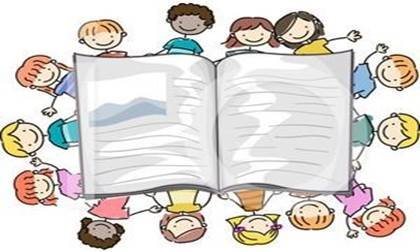 1.3 HUMAN BINGO
1.3 HUMAN BINGO
Materials: Worksheet 5
Dynamic: Whole class
Time: 15 minutes Procedure: 1. Go over question formation if necessary. If this is used as a review, the students should be able to form questions from the prompts. Give a copy of the handout to each student.
2. Tell them to circulate, asking their classmates questions as indicated by the prompts on the bingo card. If a student answers yes, they write that student’s name after the prompt. If the student answers no, they continue asking until they find someone who answers yes.
3. As in Bingo, there are several ways to win.
a. The first student who gets five names in a row wins.
b. The first student who fills in the four corners wins.
c. The first student who completes the board wins.
d. The first student who makes a cross wins (third row down and third row across).
e. Use any other variation you choose.
4. After you have a winner, go over the tense used and why (fact or habit?) and some of the answers (“Whose favorite color is green?” “Who gets up at 7:00?”).
Variations:
a. Make your own grid from information you know about your students. They will be more likely to be able to complete the game.
b. Use at holiday times with prompts geared to the holiday.
Examples: Has seen a ghost, Will go to the costume party tonight, Has eaten candy corn, Knows what a ghoul is.
1.4 TWENTY QUESTIONS
Materials: None
Dynamic: Whole class
Time: 10 minutes
Procedure: 1. Choose a category, such as famous people, occupations, food, or animals. Choose one student to answer questions from the rest of the class. Show the student a piece of paper with a word telling what he or she is (an object or person in the category). This student sits in front of the class and may answer only yes or no to any question.
2. The class may ask a total of 20 yes/no questions to discover the “identity” of the student in front of the class (the word on the paper the student was shown). If they guess the student’s identity before or by the 20th question, the class wins. If the class does not guess
correctly, the student wins. (Although this is based on the popular Twenty
Questions game, you may want to vary the number of questions the class can ask.
Be sure to make the number clear before the game begins.)
Variation: To make the game more challenging, especially at the higher levels, omit step 1 so that the students use up some of their questions determining the category.
 1.5 CLUE
1.5 CLUE
Materials: None
Dynamic: Whole class
Time: 20 minutes Procedure: 1. This is another variation of Twenty Questions.
Choose one student to come to the front of the class. This student will be given an identity and will give clues to the class. The class tries to guess the identity from the clues and can ask only yes/no questions.
2. Before starting the game, discuss strategy with the class. Tell them that the student who is giving clues will give the most difficult clues first and the easiest
last.
Example: Identity: baseball
SAMPLE CLUES: Many people like me. You can watch me. It is (or I am) done outdoors. I am a game/sport. You need a mitt to play.
3. If the class guesses the identity, it wins. If the class cannot guess the identity after a preannounced number of clues (between 5 and 10), the student wins. Variation: Send one student out of the room. Give the class an identity for that student, discuss clue strategy, and go over possible clues. When the student returns, the class members begin giving clues. The student may ask only yes/no questions, or you may limit his/her questions to identity questions (“Am I a teacher?”). If the student guesses his/her identity, he/she wins. Otherwise, the class wins.
2 PRESENT PROGRESSIVE
2.1 PICTURE SENTENCES
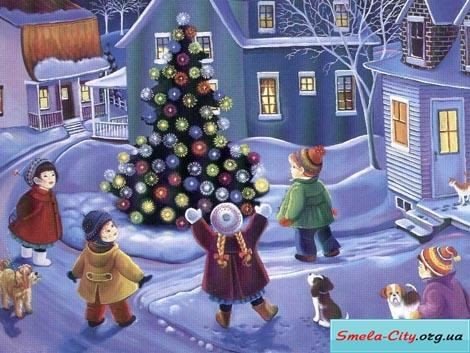
Materials: Worksheet 9 or pictures with a lot of activity going on
Dynamic: Small group
Time: 25 minutes
Procedure: 1. Divide the class into groups of three or four. Give each group the same picture, or put it on an overhead.
2. Instruct the groups to describe the picture in as many sentences as possible in the time allowed, using the present progressive. The sentences must be grammatically correct and accurately depict what is happening in the picture.
3. Each group reads its sentences or writes them on the board. The group with the most correct sentences wins.
Variation 1: Give each group a different picture.
Variation 2: Give each group a different picture. Follow step 2. After 15 seconds, say “Pass” and have the groups pass their picture to the next group. Continue until all groups have written sentences for all pictures. Score the correct answers as in step 3.
NOTE: Good sources for pictures are a picture dictionary (especially if the students have the same one
2.2 WHAT’S HAPPENING IN YOUR COUNTRY?

Materials: None
Dynamic: Whole class
Time: 15 minutes
Procedure: 1. Ask any student in the class what time it is in his/her country at that moment.
2. Then ask the student who he/she lives with when in his/her country. (Sample answers: “In Japan, I live with my mother, father, two brothers and a sister.” “In Brazil, I live with my wife and two children.” “In Taiwan, I live with my mother, father and grandmother.”)
3. Have the class speculate on what their family members are doing at that time.
Ask questions of students at random.
Example: Is your mother making breakfast? Is your mother working? Is your brother watching TV? Is your brother attending classes at the university?
4. The student who has provided time and family information should try to answer as best he/she can. For example, “I think so” or “Probably” are acceptable answers. NOTE: Be sure the student provides only the names of family members in step 2 and does not give any additional information. He/she should not say I have a tenyear-old brother, and my mother is a nurse. Just have each student give the relationships: I have a brother and a mother.
2.3 IMAGINATION

Materials: None
Dynamic: Whole class
Time: 30 minutes
Procedure: 1. Ask students to imagine a place where they would like to be.
(Sometimes it helps to play music, but this may influence them.) Have them close their eyes and imagine this place in great detail: What are they doing? How is the weather? What do they see?
Where are they sitting or standing? Who is with them? Give them several minutes to think about this place.
2. Have them take a piece of paper and write a description of what they just imagined, beginning with the place they imagined. They can write as informally as they want. You might suggest they write this as a letter to a friend (“I am sitting on a quiet beach”) or in their journal or diary.
3. Ask for volunteers to read or tell about the place they would most like to be. NOTE: You may want to demonstrate by telling them where you would most like to be and what you see yourself doing there.
3. SIMPLE PAST
3.1 DETECTIVE
 Materials: Worksheet 10
Materials: Worksheet 10
Dynamic: Pairs
Time: 30 minutes
Procedure: 1. Divide students into pairs. Have them read the situation together and fill in the blanks with a past form of to be.
2. Assign the roles of police officer and witness (or have the students choose). As a class, brainstorm some questions using a past form of to be that the police officer might ask the witness.
Examples: Was the thief tall?
Were you across the street from the office?
Where did the thief go when he left the office?
3. Have the two students practice asking and answering questions. (For a low class, you may want to copy the list of questions in the worksheet.)
4. Encourage the “police officer” to ask both yes/no and wh- questions.
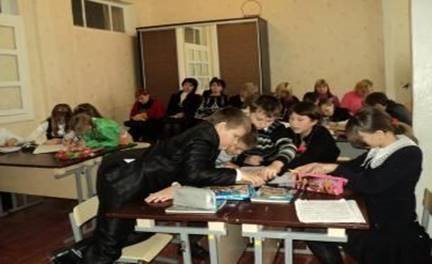 3.2 MEMORY ROUND
3.2 MEMORY ROUND
Materials: A 3” x 5” card per student, with a verb in past tense written on each
Dynamic: Whole class
Time: 20 minutes Procedure: 1. Give each student a card with the simple form of a different
verb, written large. (You may mix irregular and regular pasts, or just focus on irregular past forms.) Let each student decide what the correct past form of his/her verb is.
2. Have students sit or stand in a circle. Instruct them to think of a sentence that uses the verb on their card. They will have to remember the sentences, so they should not be overly long.
3. Students hold their cards facing the circle at all times. The first student says his/her sentence. The next student in the circle says his/her sentence and repeats student one’s sentence. Continue around the circle. The last student repeats all the previous sentences.
Example:
Student 1: I needed to buy groceries yesterday.
Student 2: I ate breakfast at 7:00, and he needed to buy groceries yesterday. Student 3: I drove to the mountains last weekend, she ate breakfast at 7:00, and he needed to buy groceries yesterday.
NOTE: You can begin with a student who seems weak (he/she will not have to remember so many sentences) or with the person next to the person who has the best memory. No writing is allowed; students must focus on what their classmates are saying.
3.3 CHAIN STORIES
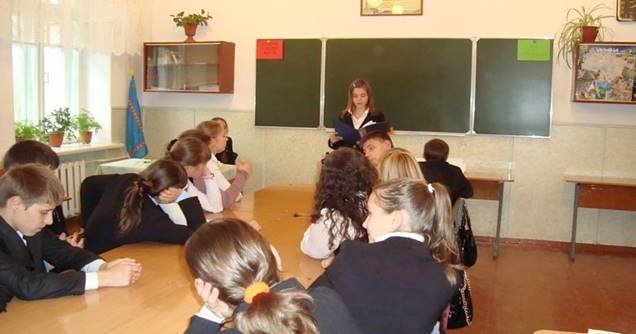
Materials: A 3” x 5” card per student, with a verb written on each
Dynamic: Large groups
Time: 20 minutes
Procedure: 1. Give each student a card with the simple form of a verb written large. The verbs may have regular or irregular past forms, or you may use a mixture. The students supply the past form.
2. Put students into groups of five or six. Give each group a sentence to begin their story. Going around in their circle, the students each add a sentence to their story, using their verb. The stories may be serious or funny, but they should make some sort of sense.
Example:
Starting sentence: Yesterday, I decided to go to the park.
Student 1: I saw an old man sitting on a bench.
Student 2: The old man was reading a newspaper.
Student 3: The newspaper fell off the bench when the old man got up.
3. After the groups have finished, they may repeat their stories for the class, write their stories, or just end the activity in the groups.
4. IRREGULAR PAST FORMS
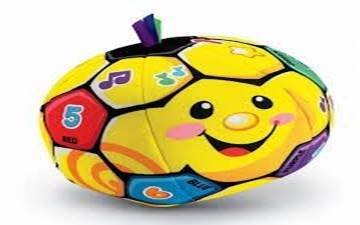 4.1 BALL TOSS
4.1 BALL TOSS
Materials: Any soft ball or beanbag
Dynamic: Whole class
Time: 5 minutes
Procedure: 1. This is a review game for irregular past forms.
The game can be played to review all irregular verbs, or you can limit students to the one or two sections they have just memorized.
2. Arrange students in a circle, either standing or at their desks. Call out the simple form of an irregular verb and toss the ball to a student. That student says the simple past form. Then he or she tosses the ball to another student, who provides the past participle. This second student then calls out a new verb and tosses the ball to a classmate.
Example:
Instructor: swim
Student 1: swam
Student 2: swum, eat
Student 3: ate
Student 4: eaten, feel
Think of this game as chains of three. The third person must both finish the chain and start a new one.
NOTE: Encourage students to toss the ball easily. Even though it is soft, you don’t want it hurting anyone. Also, if the ball comes close to a student, he or she must attempt to catch it, not avoid it.
For lower levels: Instructor: swim
Student 1: swam
Instructor: eat
Student 1: (throws ball)
Student 2: ate
Instructor: drive
Student 2: (throws ball)
Student 3: drove
5. PRESENT PERFECT
5.1 USING SIGNALS
Materials: Board
Dynamic: Small groups
Time: 10 minutes
Procedure: 1. Divide the class into groups of three or four. Write a list of signal words on the board.
Example: already, ever, for, just, many times, never, since, yet
2. Set a time limit (2 minutes, for example) and tell the groups they must write a grammatical sentence for each signal word (one per sentence). The students should write sentences using different vocabulary words so you will not get I have already eaten dinner.
I have just eaten dinner.
I have eaten dinner many times.
3. Have one student from each group read the group’s answers. Assign one point for each grammatically correct and logical sentence.
Тема: Повторення
Урок 1
Підтема: Знову до школи.
Навчальна мета: Повторити й активізувати лексику теми. Повторити правила побудови розповідних, питальних та заперечних речень у минулому неозначеному часі. Формувати навички діалогічного мовлення.
Продовжувати навчати учнів писати міні-твори. Тренувати учнів у читанні та письмі.
Розвивальна мета: Розвивати комунікативні здібності.
Виховна мета: Виховувати інтерес до вивчення іноземної мови.
Обладнання: Підручник, робочий зошит, картки для роботи у групах (НО1), (НО2).
Хід уроку
I. Підготовка до сприйнятт я іноземного мовлення Greeting 1. Привітання. Поздоровлення з початком навчального року.
Introduction 2. Знайомство з метою та завданнями навчання в 7 класі.
Presentation of the T extbook 3. Знайомство з підручником.
Aim 4. Повідомлення теми та мети уроку.
Warming up 5. Уведення в іншомовну атмосферу.
Гра «Popular Ways to Have a Summer Rest».
Клас розподіляється на дві групи, члени кожної з яких отримують картки (НО1) і заповнюють їх, ставлять один одному запитання. По закінченні роботи двоє-троє представників від кожної групи повідомляють результати опитування. Потім один з учнів робить висновки щодо найпопулярніших способів проводити канікули. Учитель стежить за правильністю граматичної будови речень.
T: Ask your friends what they did during the summer holidays.
НО 1:
What did your friends do during…
June: _____________________________________________________________ July: _____________________________________________________________
August: ___________________________________________________________
II. О сновна частина уроку
Vocabulary and Grammar Revision
1. Повторення лексико-граматичного матеріалу.
1) Cкладання Mind-Map.
Учитель записує на дошці підзаголовок «Summer Activities» і пропонує учням за одну хвилину написати якомога більше видів діяльності, якими діти можуть займатися влітку. По закінченні роботи той, хто пригадав найбільше слів, записує їх на дошці. Решта учнів доповнює його відповідь своїми варіантами. Учитель перевіряє правильність написання слів.
2) Гра «Make up a Sentence».
Клас розподіляється на дві групи. Троє учнів з кожної групи отримують по одній картці з набору (НО2). Один з них біля дошки утворює і записує розповідне речення в минулому часі, вживаючи подані в картці слова. Інші двоє членів його групи мають записати відповідні заперечне та питальне речення. Потім другий учень із карткою складає наступне розповідне речення, до якого члени його групи мають утворити заперечне і питальне, і т. д. За кожне правильно записане речення команда отримує один бал. Перемагає та, яка набере більше балів.
T: Make up sentences using the words. Write negative and interrogative forms to these sentences.
HO2:
Mike/fish/in summer Paul/go climbing/in summer
Linda/swim in the sea/in summer
Peter and John/ride bikes/in summer
Helen/fly to Brazil/in summer
Sue and Meg/visit grandparents/in summer Reading 2. Читання діалогів.
1) Pre-Reading Activity. Етап підготовки до читання. Бесіда з учнями.
2) Reading. Етап читання.
3) Post-Reading Activity. Етап перевірки розуміння змісту діалогів.
Speaking 3. Розвиток умінь мовлення.
1) Етап підготовки до написання твору. Бесіда з учнями.
Двоє-троє учнів розповідають, про що вони можуть написати у творах.
2) Етап написання міні-твору. Учні самостійно пишуть міні-твори у зошитах.
3) Етап перевірки написаних творів.
III. З аключна частина уроку Homework 1. Домашнє завдання.
Summarizing 2. Підведення підсумків уроку.
Урок 2 (2)
Підтема: Ми — Всесвіт.
Навчальна мета: Повторити й активізувати ЛО теми. Навчати учнів представляти свою країну та висловлювати власні думки. Навчати учнів писати міні-твори.
Розвивальна мета: Розвивати вміння правильно формулювати запитання. Формувати навички діалогічного та монологічного мовлення. Тренувати учнів у читанні.
Виховна мета: Виховувати любов до Батьківщини та повагу до культурних традицій народів інших країн.
Обладнання: Підручник, робочий зошит, картки для самостійної роботи (НО), карта світу, кнопки-прапорці, картки з назвами країн світу для групової гри.
Хід уроку I. Підготовка до сприйнятт я іншомовного мовлення
Greeting 1. Привітання.
Aim 2. Повідомлення теми та мети уроку.
Warming up 3. Уведення в іншомовну атмосферу.
Вивчення вірша «Important Rules».
T: You will agree with me that friends are very important for us. Now let’s make up a short poem which gives us some advice about what to do to have a lot of friends.
Учні отримують картки для самостійної роботи. Необхідно розташувати рядки вірша у правильному порядку. Той, хто першим виконає завдання, читає вірш уголос.
HO:
Put the lines in the correct order to make up a poem.
Important rules
See how important they can be.
Always be good and willing to share.
1. Here are some rules for you and me, We follow these rules wherever we go.
Always be honest, be kind and fair,
These are rules we all should know,
Important Rules
Here are some rules for you and me, See how important they can be.
Always be honest, be kind and fair,
Always be good and willing to share.
These are rules we all should know,
We follow these rules wherever we go.
Check on Homework 4. Перевірка домашнього завдання.
II. О сновна частина уроку Reading 1. Подання тексту для читання.
1) Pre-Reading Activity. Етап підготовки до читання.
2) Reading. Етап читання.
3) Post-Reading Activity. Етап перевірки розуміння змісту тексту.
Speaking 2. Розвиток умінь мовлення.
Гра «My Favourite Place for Spending Holidays».
Учні самостійно усно готують невелику розповідь про свої улюблені місця відпочинку, не називаючи їх. Потім вони по черзі описують ці місця та розповідають про те, що можна там робити, а решта учнів відгадує їхні назви.
Той, хто відга дав, розповідає про наступне місце.
Гра «In the International Summer School».
Учитель закріплює на дошку карту світу і роздає учням кнопки-прапорці та картки з назвами країн, які вони мають представити (двоє учнів можуть представляти одну і ту ж країну, але різні її частини). Необхідно прапорцями помітити на карті свою країну, обрати собі відповідне ім’я та скласти список запитань до пред ставників інших країн (4—5 запитань за 5 хвилин). За основу можна взяти запитання впр. 3 (с. 6).
Writing 3. Письмо
III. З аключна частина уроку Homework 1. Домашнє завдання.
Summarizing 2. Підведення підсумків уроку. Бесіда з учнями.
Урок 3 (3)
Підтема: Мої друзі.
Навчальна м ета: Повторити й активізувати лексику теми «Зовнішність та характер людини». Повторити правила утворення та вживання теперішнього та майбутнього неозначених часів.
Розвивальна мета: Розвивати навички усного мовлення. Тренувати учнів в аудіюванні та читанні. Формувати навички діалогічного мовлення.
Виховна мета: Виховувати прагнення бути гарним другом та цінувати дружбу.
Обладнання: Підручник, робочий зошит, картки для самостійної роботи (НО1), для роботи в парах (НО2), два набори карток для роботи у групах (НО3).
Хід уроку
I. Підготовка до сприйнятт я іншомовного мовлення Greeting 1. Привітання.
Aim 2. Повідомлення теми та мети уроку.
Check on Homework 3. Перевірка домашнього завдання.
Warming up 4. Уведення в іншомовну атмосферу.
1) Вірш «Important Rules».
2) Гра «Appearance-words».
Учні отримують картки для самостійної роботи. Учитель читає слова, що опису ють різні частини обличчя; необхідно записати їх у відповідний стовпчик. Деякі слова можна записати більше ніж в один стовпчик. По закінченні роботи п’ятеро учнів уголос читають по одному стовпчику виписаних слів. Учитель та решта класу стежать за правильністю виконання завдання.
HO1:
Write the words in the correct column.
Face Hair Nose Eyes Lips
T: Curly, blue, thin, straight, oval, black, plump, turned-up, square, red, small, green, short, wavy, pink, brown, round, long.
II. О сновна частина уроку
Reading and Vocabulary Practice
1. Подання тексту для читання та відпрацювання лексичного матеріалу. 1) Pre-Reading Activity. Етап підготовки до читання.
2) Reading. Етап читання.
3) Post-Reading Activity. Етап перевірки розуміння змісту тексту.
Гра «In Other Words».
Учитель розподіляє клас на дві команди і вголос читає словосполучення. Члени команд по черзі мають замінити їх відповідними словосполученнями з тексту вправи. За кожну правильну відповідь надається один бал. Якщо команда не мо же відповісти, право відповіді переходить до суперників.
Перемагає команда, яка отримає більше балів. T: Something that has no end (endless);
to tell something sad to your friend (to share your sadness);
to tell something you don’t want anyone else to know (to share secrets with); not to be afraid to tell good and bad things to a person (to be straight with); to be sure your friend will help you in any situation (to rely on); not to tell secrets to anyone (to keep secrets);
to leave a person without help (to let smb. down).
в) Бесіда з учнями.
T: What can Bohdan do with his best friend? What is very important about friends for Elizabeth? What do you speak about with your best friend? What can you do with your best friend? What is very important for you in friendship?
Speaking 2. Розвиток умінь мовлення. Робота в парах. А. Make up a dialogue.
Ask your partner:
— if he/she has got the best friend and what the best friend’s name is;
— what his/her best friend looks like;
— how old his/her best friend is;
— what he/she likes to do with the best friend together. В. Make up a dialogue.
Ask your partner: if he/she has got the best friend and what the best friend’s name is; where his/her friend lives; about the friend’s character; what he/she can talk with the best friend about.
Grammar Practice 3. Повторення граматичного матеріалу: теперішній та майбутній неозначений часи.
Гра «Make up a Sentence».
Клас розподіляється на дві групи. Учитель розкладає на столі два набори карток. Члени кожної групи ланцюжком підходять до столу, беруть по одній картці, складають речення з поданими словами, вживаючи правильний граматичний час, і записують їх на дошці. За кожне правильне речення надається один бал. Перемагає команда, яка отримає більше балів. Учитель перевіряє правильність виконання завдання.
T: Make up sentences.
HO3:
1. They/speak/about/the holidays/tomorrow.
2. She/always/share/her/secrets/with/her/sister.
3. His friend/usually/help/him/with/his/homework?
4. Where/you/spend/your/holidays/next/year?
5. How often/they/play/chess/together?
6. He/bring/me/this/disc/in/three/days.
7. I/often/have/a good/laugh/with/my/friend.
8. She/play/a game/of tennis/with/me/next/Sunday?
По закінченні гри учитель пропонує учням пригадати правила утворення та вживання теперішнього неозначеного та майбутнього неозначеного часів.
Двоє з них розповідають правила за допомогою вчителя та решти класу.
III. З аключна частина уроку Homework 1. Домашнє завдання.
Summarizing 2. Підведення підсумків уроку.
Урок 4 (4)
Підтема: Мої друзі.
Навчальна мета: Повторити й закріпити лексику теми. Закріпити граматичний матеріал: вживання теперішнього, минулого та майбутнього неозначених часів. Формувати навички монологічного мовлення.
Розвивальна мета: Тренувати учнів у читанні та аудіюванні. Практикувати учнів у написанні міні-творів.
Виховна мета: Виховувати вміння дружити та прагнення до самовдосконалення.
Обладнання: Підручник, робочий зошит, картки для самостійної роботи (НО1), для роботи у групах (НО2), (НО3).
Хід уроку
I. Підготовка до сприйнятт я іншомовного мовлення Greeting 1. Привітання.
Aim 2. Повідомлення теми та мети уроку.
Warming up 3. Уведення в іншомовну атмосферу.
Учитель роздає учням картки для самостійної роботи. Необхідно доповнити вірш словами з рамки. Той, хто першим упорався із завданням, читає вірш вголос.
HO1:
Complete the poem with the words from the box and learn it by heart.
umbrella, take, compete, stay, much, sometimes, walk
With a Friend
I can talk with a friend
And ________________ with a friend
And share my ________________ in the rain.
I can play with a friend
And ________________ with a friend
And learn with a friend And explain.
I can eat with a friend
And ________________ with a friend
And even ________________ disagree.
I can ride with a friend
And ________________ pride with a friend
A friend can mean so ________________ to me!
By Vivian Gouled
Check on Homework 4. Перевірка домашнього завдання.
II. О сновна частина уроку
Vocabulary Practice
1. Активізація та відпрацювання лексичного матеріалу.
1) Складання Mind-Map.
Учні самостійно записують у зошитах назви рис характеру людини протягом 2 хвилин, після чого підраховують кількість пригаданих слів. Той, у кого їх найбільше, записує свої слова на дошці. Решта учнів доповнює його відповідь своїми варіантами. Учитель контролює правильність написання
слів.
2) Гра «Positive-Negative».
Учитель розподіляє клас на дві команди, члени яких ланцюжком виходять до дошки і записують слова на позначення рис характеру у дві колонки: з позитивним і негативним значенням. За кожне правильно записане слово команда отримує один бал. Перемагає та, яка набере більше балів.
T: Kind, cheerful, dishonest, sociable, greedy, caring, lazy, stupid, selfish, polite, careless, helpful, reliable, rude, generous, responsible, forgetful, shy.
Speaking 2. Розвиток умінь мовлення.
1) Робота у групах.
Учитель розподіляє клас на групи по четверо учнів. Кожен з них отримує по одній картці з набору (НО2). Учні у групах ставлять один одному запитання та збирають інформацію. Час роботи — 5—7 хвилин. По закінченні опитування представники груп повідомляють про його результати.
Т: Ask your friends and find out the information.
HO2:
Ask your friends and find out what positive features of character their
friends have. Ask your friends and find out what features of the character of their best friends they don’t like. Ask your friends and find out what they appreciate most in their friends. Ask your friends and find out what features of character they would like to have to be good friends.
Reading 3. Подання тексту для читання. Впр. 6 (с. 9).
1) Pre-Reading Activity. Етап підготовки до читання.
2) Reading. Етап читання.
3) Post-Reading Activity. Етап перевірки розуміння змісту тексту.
Grammar Practice 4. Закріплення граматичного матеріалу: теперішній, минулий та майбутній неозначені часи.
Гра «Correct the Mistake».
Клас розподіляється на дві команди. Учитель розкладає на столі два набори карток (НО3). Члени кожної з команд ланцюжком підходять до столу, беруть одну з карток, знаходять помилку та записують на дошці правильний варіант речення. За кожне правильно записане речення надається один бал.
Перемагає команда, яка отримає більше балів.
Т: Find the mistake and correct the sentence.
HO3:
1. She spended her last weekend in the country.
2. They often tells each other endless stories about their school life.
3. Did we meet after school tomorrow?
4. He sometimes go shopping with his mother.
5. What will they prepare for the concert yesterday?
6. His sister doesn’t likes chocolate ice-cream.
7. My friends arrived from their holidays in a week.
8. When did he flew to Paris?
Writing 5. Письмо.
III. З аключна частина уроку Homework 1. Домашнє завдання.
1) РЗ, впр. 1 (с. 3), 2, 3 (с. 4), письмово.
2) Вивчити вірш «With a Friend».
III Conclusion
In the present work we attempted to investigate the problem of game using at English language lessons, one of the main problems in theory of English grammar teaching. Recently, using games has become a popular technique exercised by many educators in the classrooms and recommended by methodologists. Many sources, including the ones quoted in this work, list the advantages of the use of games in foreign language classrooms. Though the main objectives of the games were to acquaint students with new words or phrases and help them consolidate lexical items, they also helped develop the students' communicative competence.
From the observations, I noticed that those groups of students who practiced grammar activity with games felt more motivated and interested in what they were doing. However, the time they spent working on the words was usually slightly longer than when other techniques were used with different groups. This may suggest that more time devoted to activities leads to better results. The marks students received suggested that the fun and relaxed atmosphere accompanying the activities facilitated students' learning. But this is not the only possible explanation of such an outcome. The use of games during the lessons might have motivated students to work more on the vocabulary items on their own, so the game might have only been a good stimulus for extra work.
Although, it cannot be said that games are always better and easier to cope with for everyone, an overwhelming majority of pupils find games relaxing and motivating. Games should be an integral part of a lesson, providing the possibility of intensive practice while at the same time immensely enjoyable for both students and teachers. My research has produced some evidence which shows that games are useful and more successful than other methods of vocabulary presentation and revision. Having such evidence at hand, I wish to recommend the wide use of games with vocabulary work as a successful way of acquiring language competence.
WORKSHEET 1: IN COMMON
|
Name |
In common |
|
|
|
|
|
|
|
|
|
|
|
|
|
|
|
|
|
|
|
|
|
|
|
|
|
|
|
|
|
|
|
|
|
|
|
|
WORKSHEET 2: SHORT ANSWERS
|
Yes, I do.
|
No, he doesn’t. |
|
Yes, they do.
|
No, they don’t. |
|
Yes, I am.
|
No, I am not. |
|
Yes, he is.
|
No, he isn’t. |
|
Yes, she does.
|
No, she doesn’t. |
|
Yes, she is.
|
No, she isn’t. |
|
Yes, it is.
|
No, it isn’t. |
|
Yes, it does.
|
No, it doesn’t. |
WORKSHEET 4: PICTURE SENTENCES
You and your partners will write sentences to describe this picture, using the present progressive. Write as many as you can in ____ minutes.

WORKSHEET 5: DETECTIVE
Fill in the blanks with a past form of to be (was, were, wasn’t or weren’t).A thief stole a computer and printer from an office on campus Saturday at 10:00. Sandy_______ in the parking lot across from the office, standing next to her car. She saw him for only a few minutes, but she __________sure she could identify him. The police officers happy to have a witness, but they____________ sure how much Sandy saw from the parking lot. Sandy_________________ positive she could answer the detectives’ questions.
QUESTIONS:
1.___________ you near the ESL office at 10:00 on Saturday?
2. Why________ you on campus on a Saturday?
3. ________the office open when you arrived?
4. __________you able to see anyone run out of the office?
5. What________ in his hands?
6. How tall_________ he?
7. What color________ his hair?
8._________ his clothes old or new?
9._________ his clothes expensive?
10. How old ______________he?
11._____________ he someone you knew?

Slide 2 Grammar teaching plays an important role in English language teaching. It is not unusual to find that in senior high schools a lot of problems still exist in the English grammar teaching, especially in the way teachers teach it. Is teaching grammar explicitly the only choice left to be made? There are still problems existing in the current settings which are particularly exam-focused. Students need to achieve fluency as well as accuracy in grammar learning. Thus, the importance and methods of grammar teaching and communicative language teaching will be the main concern of this presentation work
Communication activities can be used to:
n Practice the target language point by eliciting the target language during the communication activity.
n Enable the teacher (or students themselves) to actively correct the use of the target grammar point.
n  Use the input form the communication activity to discuss, elaborate and check that students correctly understand the target grammar point.
Use the input form the communication activity to discuss, elaborate and check that students correctly understand the target grammar point.
Slide 3. Communicative activities
The best way to teach any points of English grammar (and in fact, grammar of any language) is to teach it in the context of and using examples from a real-life like (or even actual real-life) language. Context is very important when teaching grammar. As for students, they learn grammar for communication but not for learning grammar knowledge. The central concept in communicative language teaching is “communicative competence”. This covers both the spoken and written language and all four language skills. Learning strategies, like allowing learners to become more self-directed and more independent in learning the new language help them to participate actively in communication. Communicative activities can be used to teach any grammar point, as all grammar is expressed in language.
Among other uses, communication activities can be used to:
(1) Practice the target language point by eliciting the target language during the communication activity.
(2) Enable the teacher (or students themselves) to actively correct the use of the target grammar point.
(3) Use the input form the communication activity to discuss, elaborate and check that students correctly understand the target grammar point.

Slide 4 There are two approaches to using communicative activities for grammar teaching, one that might be described as bottom-up and another of a more topdown character.
The bottom-up approach introduces the target language point in a communicative form first and ensures that the point (structure)is understood in this particular context. The grammar point can be then elaborated and explained, to be followed by a structured output (e.g. drills) and then communicative activities designed to elicit the target language from relatively unstructured output.
The top-down approach starts with introducing the grammar point in a formal manner, to the practice it in a structured way and only potentially include communicative activities later on in the process of consolidation.

Slide 5 However, according to William Littlewood, one of the most characteristic features of communicative language teaching is that it pays systematic attention to functional as well as structural aspects of language
Advantages of Communicative language teaching
n It really does benefit the students in a variety of ways
n learners will learn best if they participate in meaningful communication.
n  we can get the student to communicate as well as to improve both fluency and accuracy
we can get the student to communicate as well as to improve both fluency and accuracy
Slide 6 Communicative language teaching itself has a lot of advantages. It really does benefit the students in a variety of ways. We believe that learners will learn best if they participate in meaningful communication. The method is learnercentered and emphasizes communication and real-life situations, compared with traditional grammar teaching which emphasize grammar rules. By employing communicative grammar teaching, we can get the student to communicate as well as to improve both fluency and accuracy. Furthermore, we can also increase motivation and promote learning.

Slide 7 The eight characteristics of communicative language teaching
In the book “Interpreting Communicative Language Teaching: Contexts and Concerns in Teacher Education” Savignon includes a useful summary of the eight characteristics of communicative language teaching by the linguist M. Berns:
1) Language teaching is based on a view of language as communication.
2) Diversity is recognized and accepted as part of language development
3) A learner’s competence is considered in relative, not in absolute, terms.
4) More than one variety of the language is recognized as a viable model for learning and teaching.
5) Culture is recognized as instrumental in shaping speaker’s communicative competence
6) No single methodology or fixed set of techniques is prescribed.
7) Language use is recognized as serving ideational, interpersonal, and textual functions
8) It is essential that learners be engaged in doing things with language – that is, that they use language for a variety of purposes in all phases of learning

Slide 8 One major feature of communicative language teaching is pair and group work. This type of work “is suggested to encourage students to use and practice functions and forms” That helps the students to become more independent and to accept responsibility. Communicative language teaching emphasizes “selfdirection for the learners”. As the teacher won’t be around to guide them the whole time, especially not when the learners speak the language outside the classroom they are expected to take on a greater degree of responsibility for their own learning. The learner should enter into situations where communication takes place as much as possible to increase his or her communicative proficiency. Learners have to participate in classroom activities based on a cooperative rather than individualistic approach to learning; they need to listen to their peers in order to carry out group work successfully.

Slide 9 The teacher adopts different roles. On the one hand she is a “facilitator, a guide and a helper” and on the other hand a “coordinator, an ideaperson and a co-communicator” . In addition to that, the teacher also identifies the students’ learning strategies and helps the students to improve them if necessary and shows them how to work independently.

Slide 10 Classroom activities used in communicative language teaching include the following:
• Role-play
• Interviews
• information gap
• Games
• Language exchanges
• Surveys
• Pair-work

Slide 11. The advantages of using games
Games are not just time-filling activities but have a great educational value. Most language games make learners use the language instead of thinking about learning the correct forms. There are many advantages of using games. They are highly motivating and entertaining, and they can give shy students more opportunity to express their opinions and feelings. They also enable learners to acquire new experiences within a foreign language which are not always possible during a typical lesson. In the easy, relaxed atmosphere which is created by using games, students remember things faster and better. Games encourage, entertain, teach, and promote fluency. If not for any of these reasons, they should be used just because they help students see beauty in a foreign language and not just problems.

Slide 12 Another factor influencing the choice of a game is its length and the time necessary for its completion. Many games have a time limit, but the teacher can either allocate more or less time depending on the students' level, the number of people in a group, or the knowledge of the rules of a game etc.
Games are often used as short warm-up activities or when there is some time left at the end of a lesson. Games ought to be at the heart of teaching foreign languages. Games be used at all stages of the lesson, provided that they are suitable and carefully chosen. Games also lend themselves well to revision exercises helping learners recall material in a pleasant, entertaining way.

Slide 13 Learning grammar through games
The collection of word games is a valuable resource for the teacher of young through adult learners of English as a second or foreign language. Focusing primarily on language development through the use of high frequency vocabulary and structures, they reinforce classroom lessons and provide additional spelling, conversation, listening and speaking practice.
Grammar games can be used in three ways:
n ![]() diagnostically before presenting a given structure area to find out how much knowledge of the area is already disjointedly present in the group;
diagnostically before presenting a given structure area to find out how much knowledge of the area is already disjointedly present in the group;
n after a grammar presentation to see how much the group have grasped;
n as revision of a grammar area.
Slide 14 Grammar games can be used in three ways:
diagnostically before presenting a given structure area to find out how much knowledge of the area is already disjointedly present in the group; after a grammar presentation to see how much the group have grasped; as revision of a grammar area.
A game should be planned into the day's lesson right along with exercises, dialogues and reading practice. It should not be an after thought. Games are a lively way of maintaining students' interest in the language, they are fun but also part of the learning process, and students should be encouraged to take them seriously. They should also know how much time they have to play a game. It's not useful to start a game five minutes before the end of the lesson. Students are usually given a `five-minute warning' before the time is over so they can work towards the end. The older the students are, the more selective a teacher should be in choosing a game activity. Little kids love movements, while older ones get excited with puddles, crosswords, word wheels, and poster competitions whatever.

Slide 15 Other reasons for including games in a language class are:
1. They focus student attention on specific structures, grammatical patterns.
2. They can function as reinforcement, review and enrichment.
3. They involve equal participation from both slow and fast learners.
4. They can be adjusted to suit the individual ages and language levels of the students
5. They contribute to an atmosphere of healthy competition, providing an outlet for the creative use of natural language in a non-stressful situation.
6. They can be used in any language-teaching situation and with any skill area whether reading, writing, speaking or listening.
7. They provide the immediate feedback for the teacher.
8. They ensure maximum student participation for a minimum of teacher preparation.

Slide 16 Teaching vocabulary with using the games.
In teaching and learning a foreign language, vocabulary usually plays an important role. Vocabulary has not been taught in a particular subject for students to learn, but it has been taught within lessons of speaking, listening, reading and writing. During the lesson, students’ use their own vocabulary and they are set up to new words that given firstly by the teacher and classmates which they apply to classroom activities. If the teacher explains for meaning or definition, pronunciation, spelling and grammatical functions every day, it may be boring classroom activity. Students only think of vocabulary learning is to know the basic meaning of new words. And they become ejecting all other functions of the words. So, the teacher must change their teaching technique to be enjoyable learning. For example is teaching vocabulary using games.
![]() The advantages and effectiveness in various ways of learning vocabulary:
The advantages and effectiveness in various ways of learning vocabulary:
n relaxation, fun and memorize new words more easily
n games usually keep students’ interest, create the motivation,
bring real world context into the classroom
n enhance students’ use of English in a flexible, communicative way.
Slide 17. Games have advantages and effectiveness in various ways of learning vocabulary. Such as relaxation, fun and memorize new words more easily. Then, games usually keep students’ interest, create the motivation, bring real world context into the classroom, and enhance students’ use of English in a flexible, communicative way. Learning vocabulary through games is one effective and interesting way that can be applied in any classrooms. The results of this research suggest that games are used not only for mere fun, but also for the useful practice and review of language lessons, as a result leading toward the goal of improving students’ communicative competence.

Slide 18 I play a game called Slap-it with my students for terms or vocabulary. I write the vocabulary words on a board (any board will work--Smart Board, white board, etc.). I hand two students flyswatters, and they stand close to the board. I give a definition or a sentence with a blank in it, or a group of synonyms or antonyms, and the first student to slap the right word with his flyswatter wins points for his team. My 11th and 12th graders love this because they get to get out of their seats and because they get to hit the board.

Slide 19 I also use "sentence wars" with my students where one side of the classroom divides the words among themselves as does the other side. I give them a certain amount of time for each student to come up with a creative sentence for his/ her word. After the prep time is up, the two students with the same word read their sentences, and then I award points to the team with the best sentence. They love this, and it encourages them to use literary allusions or to change the part of the speech of the word to show that they really know how to use it.

Slide 20 Grammar games . What is more difficult to accept is that the grammar of the new language is also spectacularly different from the way the mother tongue works. Grammar is perhaps so serious and central in learning another language that all ways should be searched for which will focus student energy on the task of mastering and internalizing it.

Slide 21 Relay (Nouns. Singular, plural )
Materials: Board, 2 markers or pieces of chalk
Dynamic: Teams
Time: 10 minutes
Procedure: 1. Divide the class into two teams and have each line up on the opposite side of the room.
2. On the board, make two lists of the same singular nouns, but in different order. (Variation: list the plural forms.)
3. Give the first person in line a piece of chalk or marker (depending on your board type). He/She goes to the board and writes the correct plural form of one word, then passes his/her marker to the next person in line. Each student can write only one plural form, but may correct as many incorrect forms on the board as he/she wants.
4. When you call “Time!” the team with the most correct answers wins.
Games with prepositions
n On the board, write a list of prepositions of place
n Divide the students into groups of three or four and give each group several magazines.
n Give the groups a time limit and have them search through their magazines to find a picture that contains situations illustrating prepositions of place.
n ![]() When the time is up, each group goes to the front of the class, holds up its picture, and explains (in sentences) the contents of the picture, using prepositions of place.
When the time is up, each group goes to the front of the class, holds up its picture, and explains (in sentences) the contents of the picture, using prepositions of place.
Slide 22 Games with prepositions
Prepositions of the times and place
1 Magazine search
Materials: Magazines to share in groups
Dynamic: Small groups Time: 15 minutes
Procedure: 1. On the board, write a list of prepositions of place that the students have studied. Divide the students into groups of three or four and give each group several magazines. You may want to ask students to bring in their own. If you are supplying them, be sure that they have full-page ads or other large pictures.
2. Give the groups a time limit and have them search through their magazines to find a picture that contains situations illustrating prepositions of place.
3. When the time is up, each group goes to the front of the class, holds up its picture, and explains (in sentences) the contents of the picture, using prepositions of place.
Example: The dog is under the table.
The table is next to the man.
The table is in front of the window.
4. The group that found a picture allowing them to correctly use the most prepositions of place from the list on the board wins.
Note: With an intermediate group, choose a wider range of prepositions that they have already reviewed.

Slide 23 Conclusion
Recently, using games has become a popular technique exercised by many educators in the classrooms and recommended by methodologists. Many sources, including the ones quoted in this work, list the advantages of the use of games in foreign language classrooms. Though the main objectives of the games were to acquaint students with new words or phrases and help them consolidate lexical items, they also helped develop the students' communicative competence.
Those groups of students who practiced grammar activity with games felt more motivated and interested in what they were doing. However, the time they spent working on the words was usually slightly longer than when other techniques were used with different groups. This may suggest that more time devoted to activities leads to better results. The marks students received suggested that the fun and relaxed atmosphere accompanying the activities facilitated students' learning. But this is not the only possible explanation of such an outcome. The use of games during the lessons might have motivated students to work more on the vocabulary items on their own, so the game might have only been a good stimulus for extra work. Games should be an integral part of a lesson, providing the possibility of intensive practice while at the same time immensely enjoyable for both students and teachers.

IV. BIBLIOGRAPHY
1. Abbott G., D. McKeating, J. Greenwood, and P. Wingard. 1981. The teaching of English as an international language. A practical guide. London.
2. Azar B. Sh. Fun with grammar. New York. 2000
3. Ersoz Aydan. The Internet TESL Journal, Vol. VI, No. 6, June 2000.
4. Horwitz E.K., Horwitz, M.B., and Cope, J.A. 1986. Foreign language classroom anxiety. The Modern Language Journal 70 (2)
5. Rinvolucri Mario. Grammar Games: cognitive, affective and drama activities for EFL students. Cambridge, 1989.
6. Rinvolucri Mario and Paul Davis.1992. More grammar games. Cambridge University Press.
7. Rixon, S. 1981. How to use games in language teaching. London: Macmillan Publishers Ltd.
8. Wright A. Games for Language Learning. Cambridge University Press, 1984.
9. Internet: http://search.atomz.com/
10. Internet: http://e.usia.gov/forum/vols/vol36/no1/p20.htm-games
11. Internet: http://iteslj.org/Techniques/Chen-Games.html
12. Internet: http://e.usia.gov/forum/vols/vol34/no2/p22.htm-note-taking


про публікацію авторської розробки
Додати розробку
